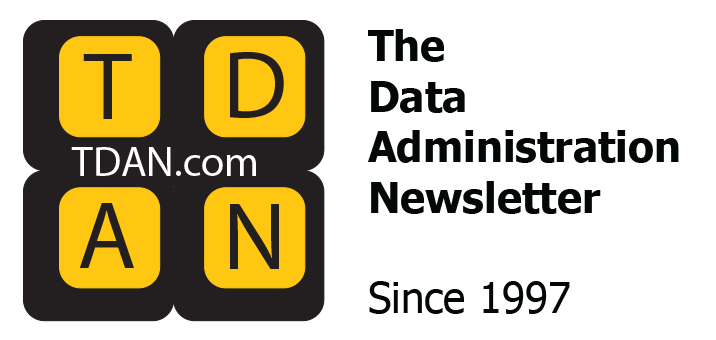
Organizations often assume they have data governance under control, but in reality, many are simply reacting to data chaos rather than actively managing it. This isn’t due to negligence or a lack of concern — rather, it’s because they don’t recognize that governance is already happening, albeit informally and inconsistently. Every day, employees make critical data decisions and take significant actions without structured oversight, creating inefficiencies, increasing risk, and difficulties in maintaining accuracy and compliance.
The challenge isn’t convincing organizations to start governing their data. The challenge is helping them see that governance is already happening — just not in a way that benefits them. Fortunately, transitioning from an ungoverned state to a more formalized and effective approach doesn’t have to be painful. By recognizing everyday data behaviors and refining them respecting the Non-Invasive Data Governance (NIDG) approach, organizations can create a sustainable, structured approach to governance without disrupting the way people work.
When Critical Data Lives in Chaos
Spreadsheets are still the lifeblood of many organizations. They pop up everywhere — tracking customer data, logging financial projections, managing project timelines. The problem? These spreadsheets often exist in silos, passed around through email, stored on personal drives, and updated without oversight. Before you know it, you have ten different versions of the same spreadsheet, each with slightly different numbers, and no one knows which one is the source of truth.
This is a classic case of informal governance at work. People are managing data, but they’re doing it in a way that lacks consistency, security, and auditability. Instead of fighting the existence of spreadsheets, organizations should recognize that they serve a critical purpose and bring them under a formalized structure. By following the NIDG approach, organizations can establish clear guidelines on how spreadsheets should be stored, accessed, and maintained — ensuring that data remains accurate, controlled, and useful. Implementing simple processes like version control, centralized data repositories, and defined ownership can instantly improve data reliability without disrupting the way people work.
Beyond version control, organizations need to consider accessibility and integration. If employees constantly have to hunt for the latest spreadsheet or manually reconcile data across multiple sources, productivity takes a hit. Establishing a central, governed repository for critical spreadsheets — whether within a data catalog, document management system, or dedicated cloud workspace — ensures that employees always have access to the most up-to-date information. Additionally, reinforcing accountability by assigning clear data ownership within these tools prevents the “Who updated this last?” mystery that often plagues spreadsheet-heavy environments.
When Decisions Get Lost in the Inbox
Have you ever been on a project where you tried tracking down who approved a data change, only to be met with an endless string of emails? Many critical data decisions happen through email chains, informal chats, and quick verbal agreements. While this method may seem convenient at the moment, it creates a nightmare when trying to audit, verify, or reproduce decisions down the line. A key piece of information can easily get buried in someone’s inbox — or worse, lost when an employee leaves the company.
This kind of informal governance leaves organizations vulnerable to inconsistency and compliance risks. But rather than forcing people to stop using email for approvals as a course of action, a lean into the non-invasive approach helps formalize what’s already happening. Implementing structured workflows, approval logs, or automated tracking tools can provide the transparency and traceability needed without adding unnecessary friction. By integrating governance into existing behaviors — rather than dictating new ones — organizations ensure that data decisions are well-documented, accessible, and aligned with business objectives.
An additional challenge is ensuring that decision-making isn’t solely tied to individuals’ email habits. A governing model that relies solely on email approvals is risky — what happens if someone forgets to forward a critical approval or accidentally deletes an important request? Organizations should leverage approval management tools that integrate directly with their data systems, allowing for structured, trackable, and reportable decision-making. Whether through workflow automation platforms, ticketing systems, or built-in governance workflows within data catalogs, organizations can reduce reliance on unstructured email chains and instead ensure approvals are formalized and easy to retrieve.
When Data Moves Without Oversight
In many organizations, data flows between systems, teams, and reports with little oversight. Employees still export data from one system, manipulate it in another, and then paste it into reports without anyone questioning its accuracy or origin. This informal data management practice creates massive inconsistencies, leading to inaccurate reporting, compliance issues, and wasted effort as teams scramble to reconcile conflicting numbers.
Rather than treating this as a rogue activity, organizations should acknowledge that data movement is essential and provide a formal framework to ensure its integrity. The NIDG approach recognizes that people need access to data and that controlling its flow shouldn’t mean slowing them down. By introducing clear guidelines on data lineage, access permissions, and proper documentation, organizations can turn this copy-paste free-for-all into a controlled, transparent, and efficient data-sharing process. The key is not to stop people from using data, but to help them do it in a way that ensures accuracy, security, and compliance.
Organizations should also consider implementing lightweight data governance controls that provide visibility into how data moves between systems without creating roadblocks. Simple metadata tagging, data lineage tracking, and automated logging can help teams understand where data originates, how it changes, and where it ultimately lands. By embedding these controls into everyday workflows, organizations can gain confidence in their data integrity without disrupting existing processes. Rather than introducing rigid bureaucratic barriers, the goal should be to make governance an enabler of better, more transparent data movement.
Conclusion
Living the ungoverned life isn’t sustainable. While informal data management behaviors may seem harmless in the moment, they can lead to serious inefficiencies, compliance risks, and decision-making errors over time. The beauty of Non-Invasive Data Governance is that it doesn’t seek to eliminate these behaviors — it seeks to refine and formalize them in a way that aligns with how people already work.
By recognizing and improving everyday data management activities like spreadsheet sprawl, email approval chains, and uncontrolled data movement, organizations can transition from chaotic, informal governance to a structured, effective framework without unnecessary resistance. The key is to meet people where they are, provide guidance instead of mandates, and create processes that support — not hinder — them. Data governance doesn’t have to be disruptive; it just has to be intentional. And when done right, organizations can move from living the ungoverned life to thriving in a data-driven world.
Organizations often assume that governance means imposing restrictions and slowing people down, but the opposite is true when done properly. When governance is seamlessly integrated into the way people already work, it becomes an enabler rather than a burden. With a Non-Invasive approach, organizations can transition from reactive, unstructured governance to a well-structured framework that aligns with business goals, supports operational efficiency, and ultimately makes data work for the organization rather than against it. The shift from informal to formal governance doesn’t require a drastic overhaul — just a willingness to refine, guide, and formalize what’s already happening.
Non-Invasive Data Governance™ is a trademark of Robert S. Seiner / KIK Consulting & Educational Services
Copyright © 2025 – Robert S. Seiner and KIK Consulting & Educational Services
